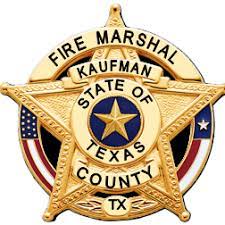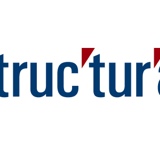Title Page
-
Site conducted
-
Conducted on
-
Prepared by
-
Location
Responsibilities
-
Has someone with appropriate skills been made responsible for specific actions in an emergency, for example managing an evacuation or assigning area wardens?
-
Is someone responsible for making sure all workers and others in the workplace, for example contractors, customers and visitors are accounted for in an evacuation?
-
Are contact details updated regularly?
-
Are specific procedures in place for critical functions, for example power shut-downs?
Emergency Contact Details
-
Are emergency contact details relevant to the types of possible threats, for example fire brigade, police and poison information centre?
-
Are the emergency contact details displayed at the workplace in an easily accessible location?
-
Do workers working alone know what to do in an emergency?
Evacuations
-
Have all emergencies requiring an evacuation at the workplace been identified?
-
Has an evacuation procedure been prepared (if applicable)? Does the Prcedure:-
-
address all types of situations and hazards which may arise at the workplace
-
cover everyone who may be present at the workplace
-
allow for quick and safe evacuation when needed
-
clearly identify routes to safe assembly areas consider special assistance for hearing, vision or mobility-impaired people, and
-
include a process for accounting for persons?
Evacuations for a fixed workplace
-
Is the evacuation procedure clearly and prominently displayed at the workplace, where practicable?
-
Is there a mechanism, for example a siren or bell alarm for alerting staff of an emergency?
-
If yes, is it regularly tested to ensure its effectiveness?
-
Is there a documented site plan that illustrates the location of fire protection equipment, emergency exits and assembly points?
-
If yes, is it posted in key locations throughout the workplace?
-
Are all exits, corridors and aisles readily accessible and kept clear of obstructions?
-
Does the workplace have illuminated exit signs?
Fire Protection Equipment
-
Does the workplace have appropriate fire protection equipment?
-
Is it suitable for the types of risks at the workplace, for example foam or dry powder type extinguishers for fires that involve flammable liquids?
-
Is it properly maintained and regularly checked and tested by the local fire authority or fire equipment supplier?
-
Is the area where the equipment is stored kept clear of obstructions?
-
Are adequate numbers of workers trained to use fire extinguishers?
-
Do they know what type of extinguisher to use for different types of fires?
Extreme weather conditions
-
If there is a risk of extreme or dangerous weather conditions, for example bushfire, floods or storms, will the control measures be effective in these conditions?
-
Do emergency procedures accommodate declarations of extreme weather warnings? Examples of extreme weather warnings may include warnings such as a code red in the case of extreme bushfires or categories 3, 4 or 5 for cyclone warnings
-
Do declarations of extreme weather warnings in the emergency plan include matters such as: safe exit routes, for example the process for identifying and communicating roads that may be closed?
-
Do procedures identify the closest designated ‘safe place’?
-
Do procedures accommodate evacuation procedures of the relevant local authorities for example the fire services, SES and police?
-
Do workers have access to reliable communications equipment?
-
Are workers trained in emergency evacuation and related procedures?
-
If workers travel into areas where extreme weather warnings may be declared, have appropriate policies and procedures been developed for when such declarations are made?
Chemical Safety
-
Are current safety data sheets available for all hazardous chemicals on site?
-
Are all hazardous chemicals labelled and stored in a safe manner?
-
Is appropriate equipment available to initially respond to a chemical incident, for example absorbent material to contain a liquid spill?
-
Is appropriate personal protective equipment and training provided to protect workers who are called on to deal with an unplanned chemical release?
First Aid
-
Has a first aid assessment been conducted?
-
Does the workplace have trained first aiders and suitable first aid facilities?
-
Are workers aware of where first aid facilities are kept and who first aiders are?
-
Neighboring Businesses
-
Have neighbouring businesses been considered if an emergency occurs?
-
How would they be advised of an emergency situation arises (if applicable)?
-
Should they be consulted about the preparation and coordination of emergency plans?
-
Have the risks from neighbouring businesses been considered, for example fire from restaurant/takeaway food outlets, Q fever from cattle yards or vehicle accidents on major roads?
Post Incident follow-up
-
Are there procedures in place to notify the relevant regulator about a notifiable incident where necessary?
-
Are there procedures in place to ensure the cause of the emergency is determined and action is taken to prevent a similar incident occurring again?
-
Are there procedures in place to ensure the welfare of workers after an emergency or an incident, for example medical treatment or trauma counselling?
Review
-
Are emergency plan practice runs undertaken to assess the effectiveness of the emergency plan, for example evacuation drills?
-
Is someone responsible for documenting and retaining the results of emergency plan practice runs?
-
Is someone responsible for reviewing the emergency plan and informing workers of any revisions?











